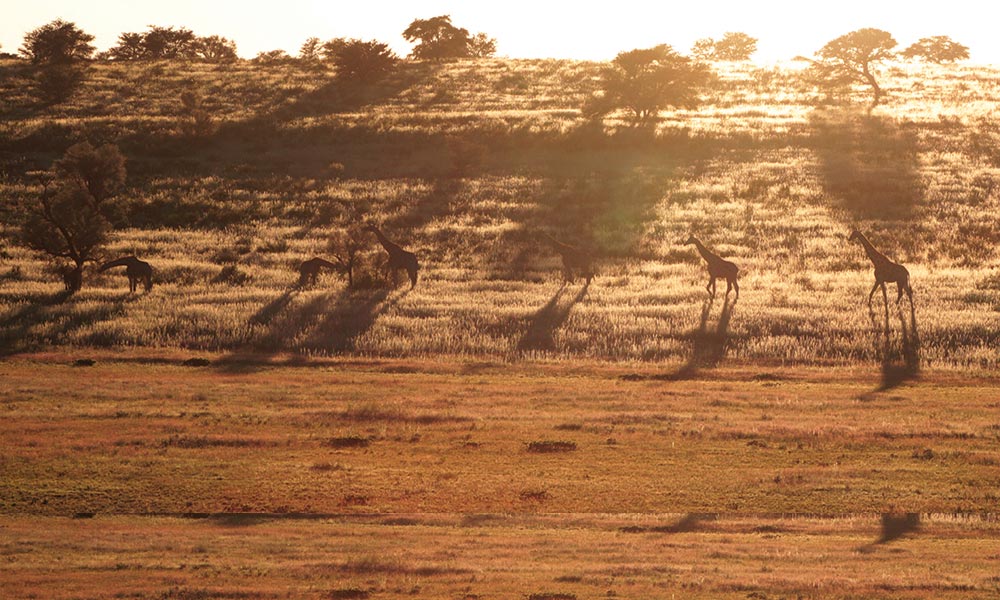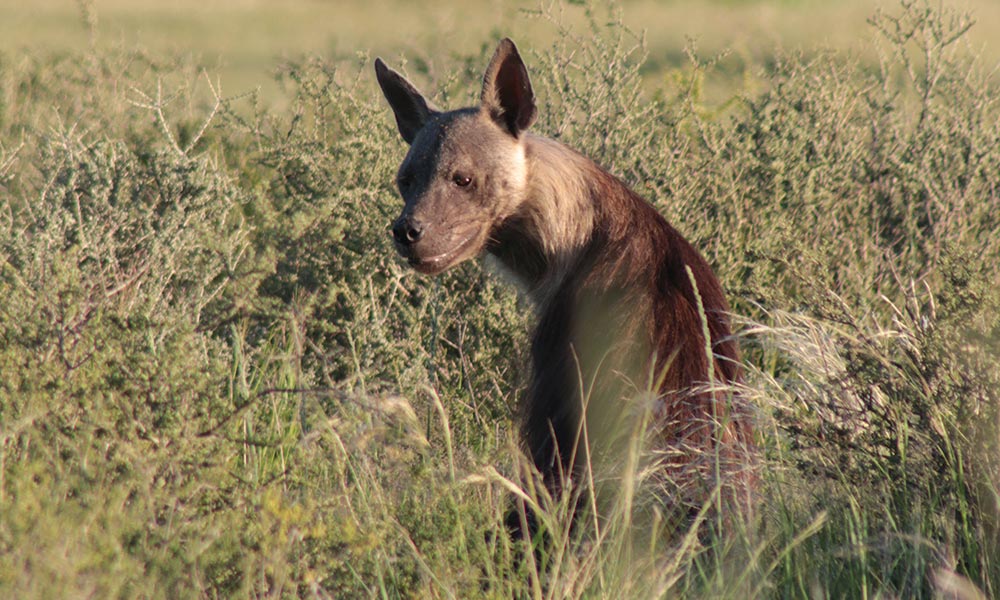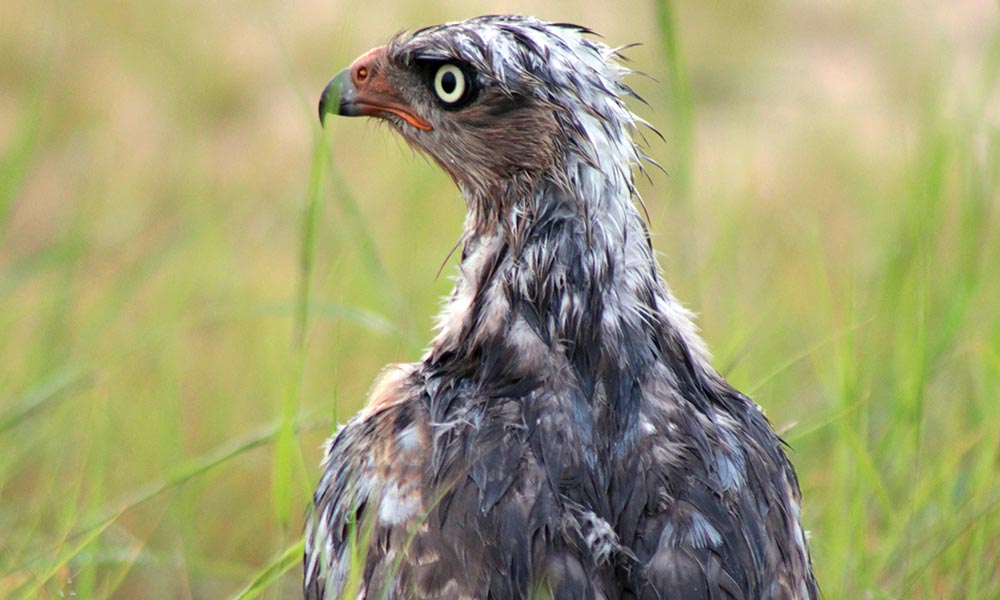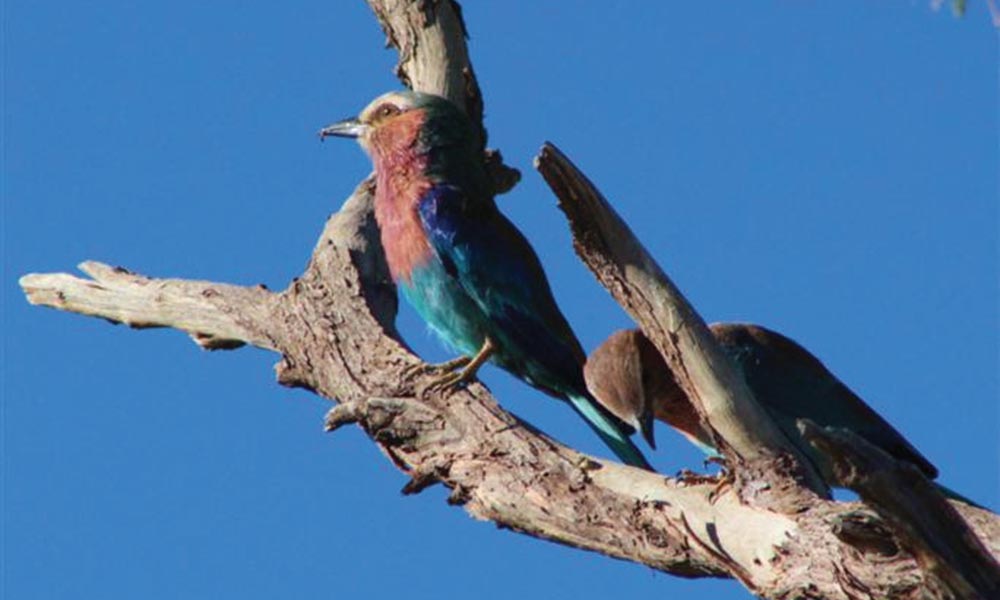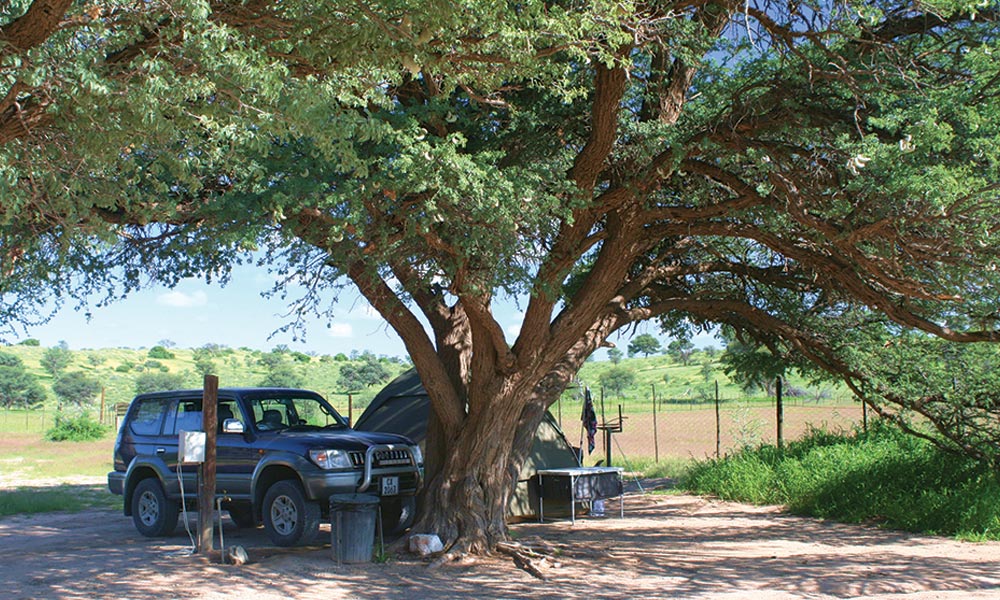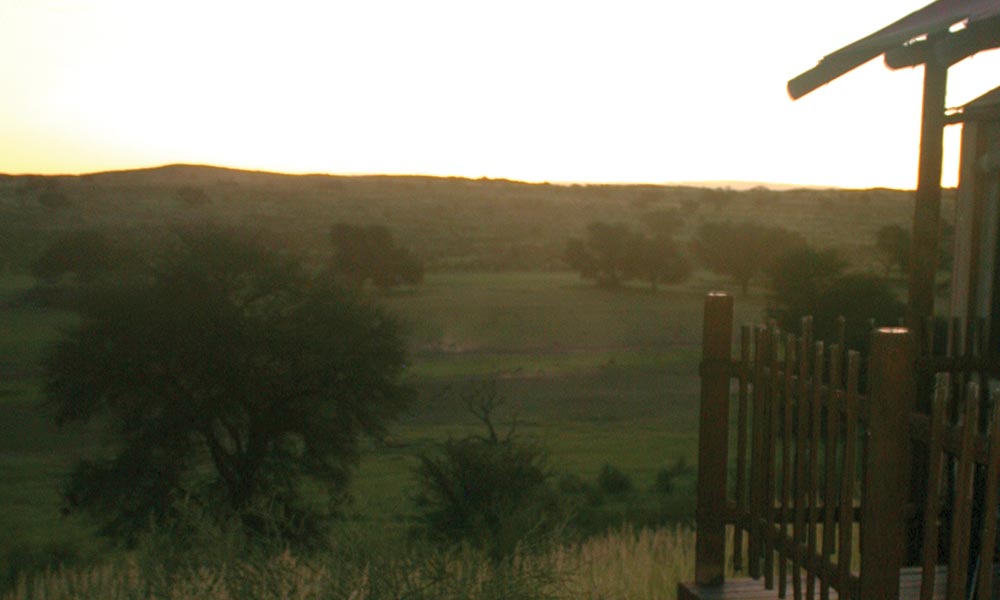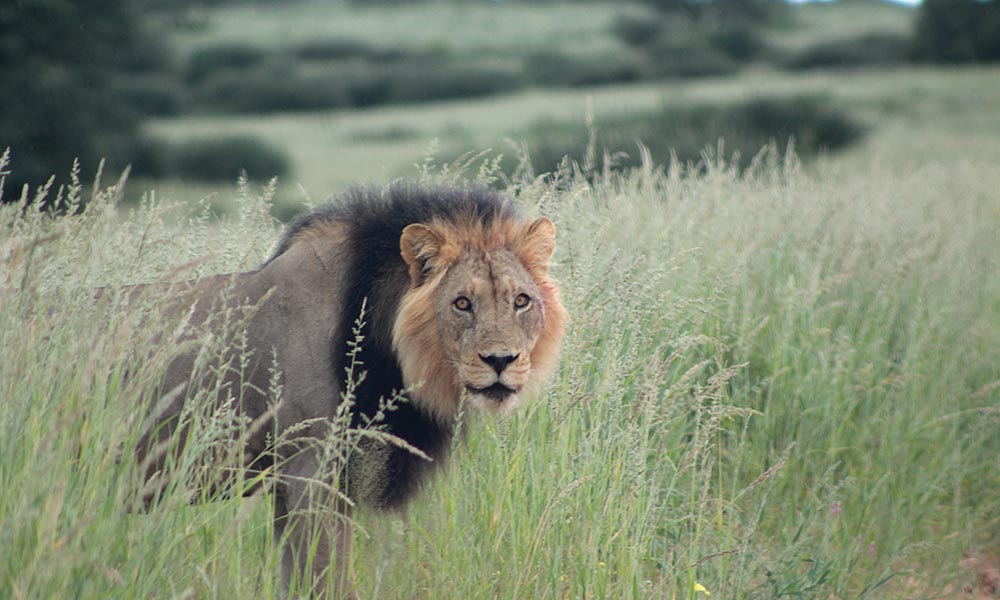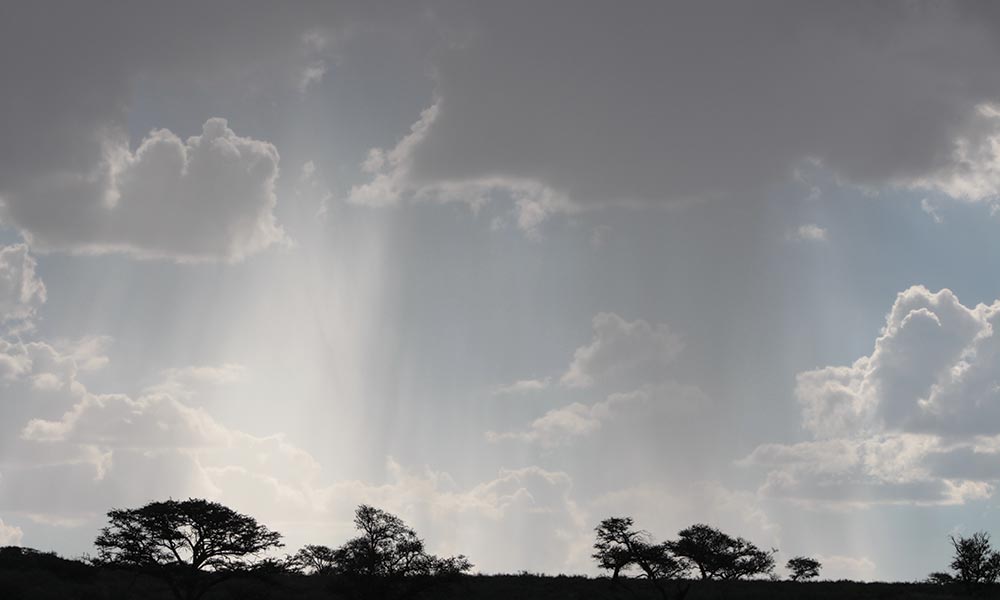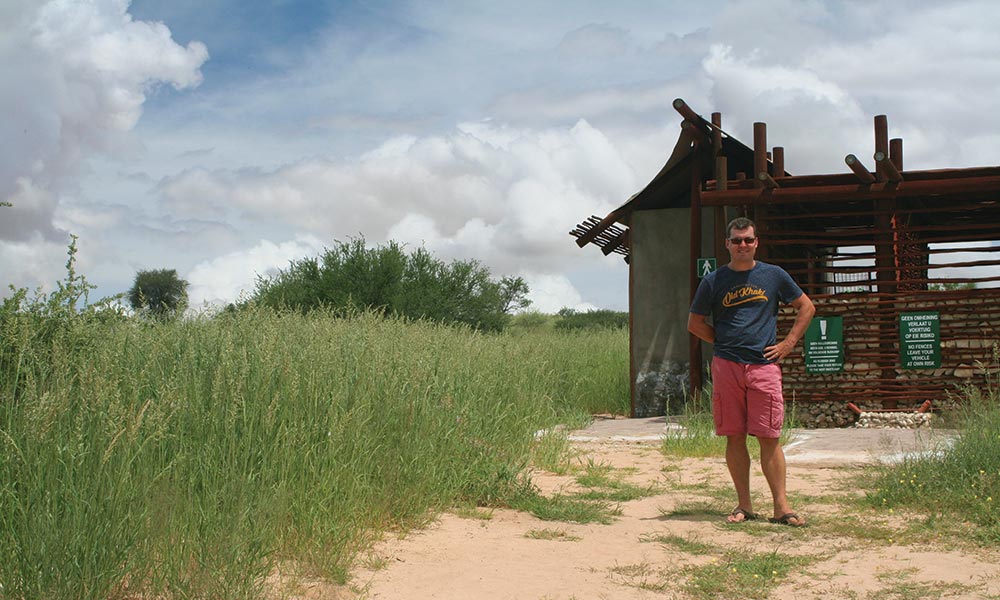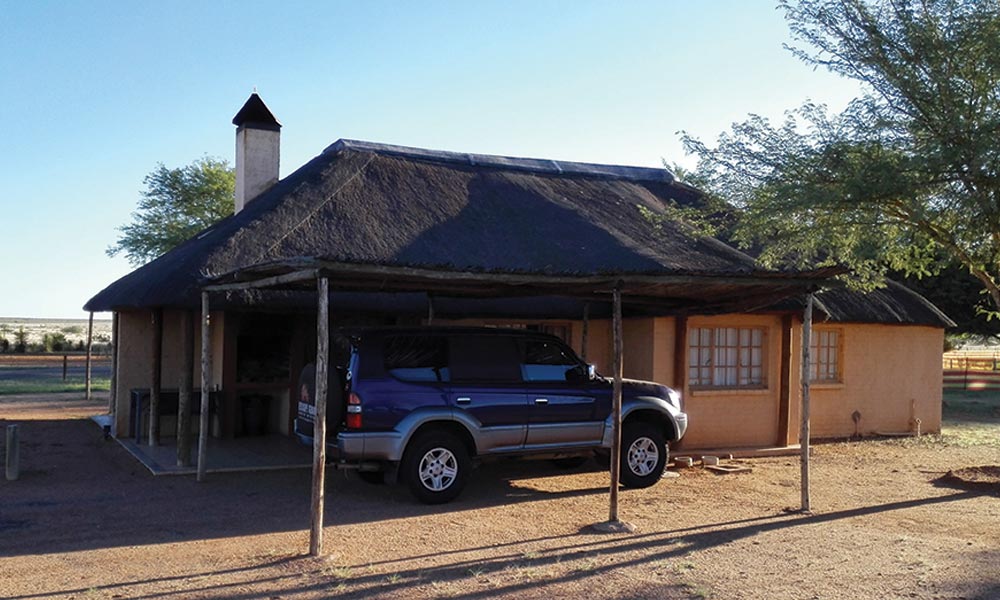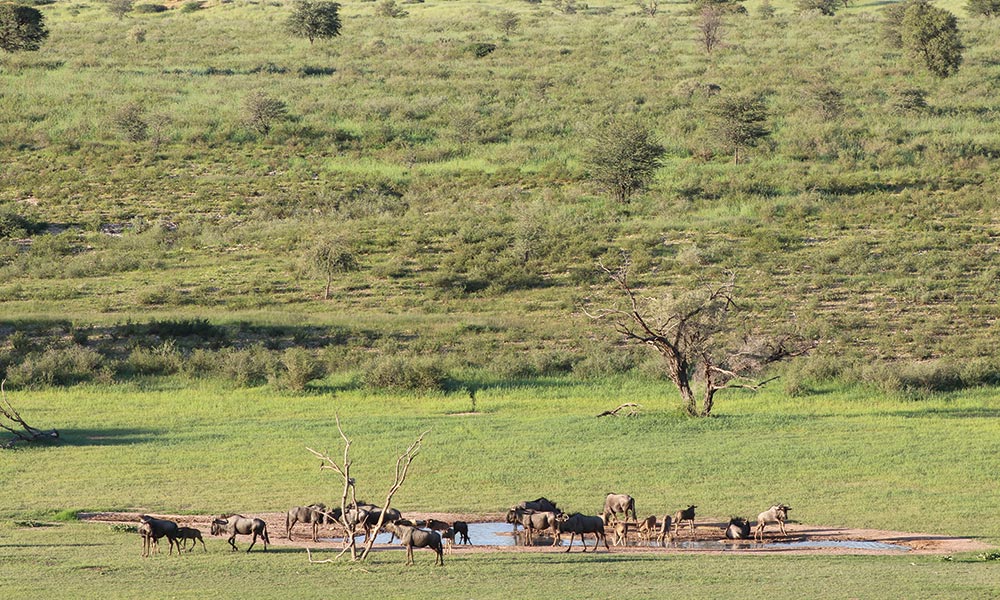Bryan Milne tells of his surprise and delight, as the Kgalagadi’s terrain transforms from a semi-desert into a vibrant space with long grass, shades of green and birds by the thousands.
Stark landscapes and desert scenery came to mind as I recalled my previous visits to the Kgalagadi Transfrontier Park (KTP) with fondness. The wide open space, with its boundless sense of freedom was calling again. I eagerly anticipated reliving my previous journeys, but more than that, I looked forward to seeing the scenic beauty anew through the eyes of my travel companion, yet to be initiated into wonders of this wild space. Little did I know that, despite this being my fourth visit to the Kgalagadi, it would be a first for me in so many ways.
My buddy and I had only a week available, Saturday to Saturday, and so the plan was to spend as much time in the park as possible without having to move campsites too often. Even though we booked well in advance it took a bit of waiting and daily checking but eventually the sites we were looking for became available, thanks to cancellations or people letting their online bookings lapse. We secured two nights’ camping at Mata Mata, one night in luxury at the Kalahari Tented Camp and finally, two nights at Nossob. We left our wives and young and hit the N7 north at 6:30am on the first Saturday. I was extremely thankful to be on the road as planned, because just the day before, my faithful Prado dropped a CV boot unexpectedly. The result was that I had to replace two boots and a CV joint.
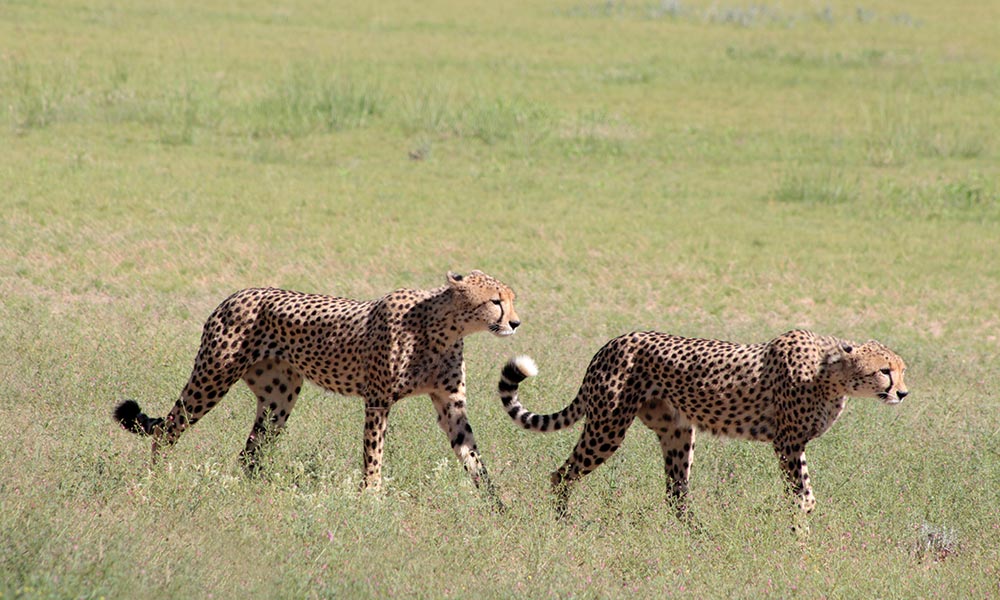
On previous trips to the KTP I had been delayed by roadworks near Citrusdal so this time I was happy to cruise through the valley on the new road. The updated software on my TomTom didn’t seem to share my delight; it got itself a touch confused and started plotting random routes back to where it thought the road should be. After the prerequisite fuel and breakfast stop at Klawer, we covered the last few kilometres on the N7 north before turning inland at Vanrhynsdorp on to the R27, in the direction of Calvinia. It was as we climbed over the top of the 9km-long Vanrhyns Pass (one of the many South African passes designed and built by Thomas Bain) into the Northern Cape that it occurred to me that this was not going to be the trip I was expecting. Instead of climbing out into warm, dry weather and the associated semi-barren scenery that I had experienced on my trips so far – these had been in winter or early spring – we drove up into a cool, almost misty, easterly wind. To my surprise, the surrounding vegetation looked lush and fresh from the rain.
The refreshingly different scenery continued for most of the trip up the R27 through Brandvlei, Kenhardt to Keimoes, where there were signs of recent rain, including in many of the pans, which instead of looking parched and barren, held water. We stopped in Upington to collect our meat order from the Upington Butchery (pre-frozen in per-night packs). Here, Ruben mentioned that they were expecting the river to rise by 2.5m in the next few hours, as there had been plenty of rain in Upington and further upstream in the preceding days. Having stocked up with meat, fuel and a few last-minute supplies, we drove the last 12km of that day’s journey to Kalahari Monate Lodge, where we would spend the night in one of the chalets. The lodge is situated just north of Upington and on the road to KTP and it is ideally located for a stop en route from Cape Town. The chalets are comfortable, the campsites neat and you can unwind after the long haul while watching the springbok (including some black ones) grazing nearby.

Following a superb night’s sleep, we had breakfast, filled the water tank with the clean drinking water provided at the campsites and pointed the Prado’s nose north to the red dune fields. When we arrived at the Twee Rivieren entrance gate to the Kgalagadi Transfrontier Park, the check-in was as usual, quick and easy. We deflated our tyres and made our way to lunch at the Auchterlonie Museum and picnic spot overlooking the Auob riverbed. It was while driving alongside the Auob that I was truly amazed, for the first of many times, by how lush and green the park is post-rain. Think more Kruger than KTP, more bushveld than red sand, it really is quite phenomenal, especially if you are used to the park in its winter livery.
We later heard that there had been heavy rainfall in the previous week and the flora was loving it. Driving up towards the Mata Mata Rest Camp, sections of the valley had the appearance of a grass landing strip or even a well-kept links golf course. It didn’t take long and we began slipping into that glorious routine: out on the road early (rusks and travel mug coffee in hand); back to camp for breakfast and then relax, swim and snooze; jaffles for lunch (steak and butternut are a winner) and then back on the road for the afternoon to sunset drive.
The birdlife is remarkable this time of year and we were stopping regularly to identify and observe the plethora of species. This meant that we would drive slowly, which in turn improved our odds of seeing other game and we truly had some wonderful sightings. It was while preparing our first night’s supper at Mata Mata that we discovered the downside of a rain-refreshed park: insects! Loads and loads of them. Insects in your supper, insects in the camp kitchen, insects by the billion in the ablution blocks. Thankfully not many of the biting variety but it did take some getting used to and we were very pleased to retire that night to our gauze protected bug-free tents. Interestingly, this was more of an issue at Mata Mata, less at Kalahari Tented Camp and even less so at Nossob.
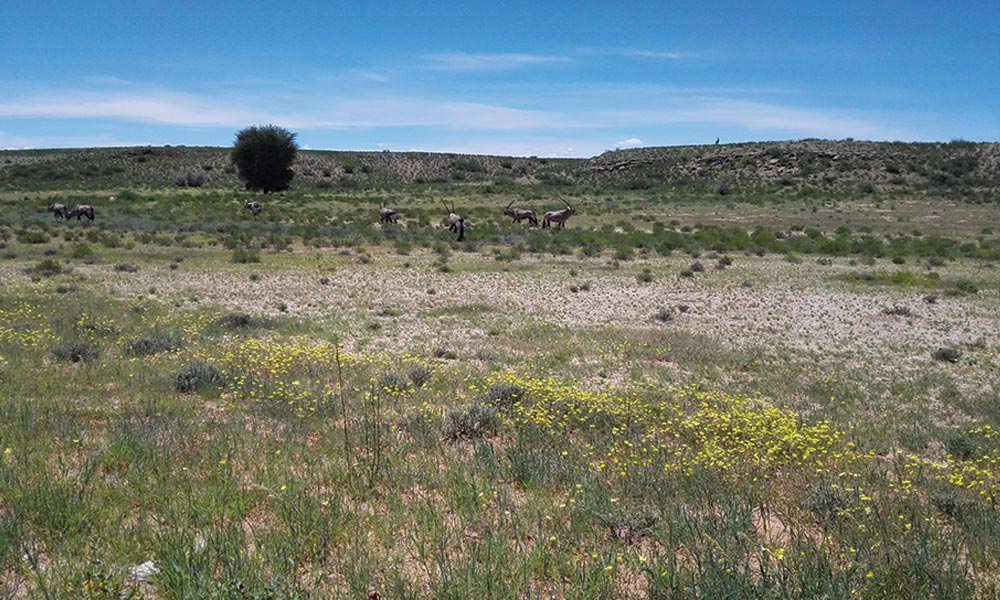
I am not sure if that’s related to the different locations or the increase in days since the last rain. Our routine took a pause for an afternoon as we enjoyed a reprieve from driving at the Kalahari Tented Camp. After checking in, we spent the afternoon unwinding, swimming and having a really relaxing braai – which included making bread – while we watched the evening antics of wildebeest and springbok at the waterhole. The night at the Kalahari Tented Camp was the highlight of the middle of our trip and is highly recommended. The next day, we crossed the dune road and headed up to Nossob, again admiring the green grass as tall as the Prado’s mirrors and the signs of heavy rainfall. The lengthy grass surrounding the picnic did up the ante a little as there was no way that you could tell if a pride of lion was sharing the site with you. Let’s just say we were more alert than usual. We arrived at Nossob Rest Camp to find that there was a fair amount of construction happening, with new riverfront chalets and campsites (with an ablution per stand) being built. It did not detract from our visit, though.
The camp water supply was off more than on during our stay but we are not really fazed as we had our own supply. I think it was partly due to the long grass that our game viewing was not quite as successful around Nossob, but we did have a superb brown hyena sighting and then a thunderstorm on the last night that more than made up for it. The last day in the park was spent packing up and winding our way down the Nossob riverbed, stopping at picnic sites and enjoying the cooler weather, spots of rain and a super-smooth newly graded road. Our best male lion sighting of the trip was barely 50m from the Melkvlei picnic site on our way out. What a way to end the trip.
We spent Friday night outside the park at the relatively new Kgalagadi Lodge, 5km from the Twee Rivieren gate, where a comfortable chalet and a superb restaurant welcomed us. It is a 1 070km drive from the lodge to Cape Town, which is a long but do-able haul. We left at 6:30am and arrived home around 7:15pm. Back home, I began to miss the park almost instantly. I’m so pleased we went when we did. We were blessed with the weather: we missed the heavy rain by a week and the blistering heat by two: perfect timing. If you have not yet experienced the Kgalagadi Transfrontier Park, my advice to you is: start planning and go.
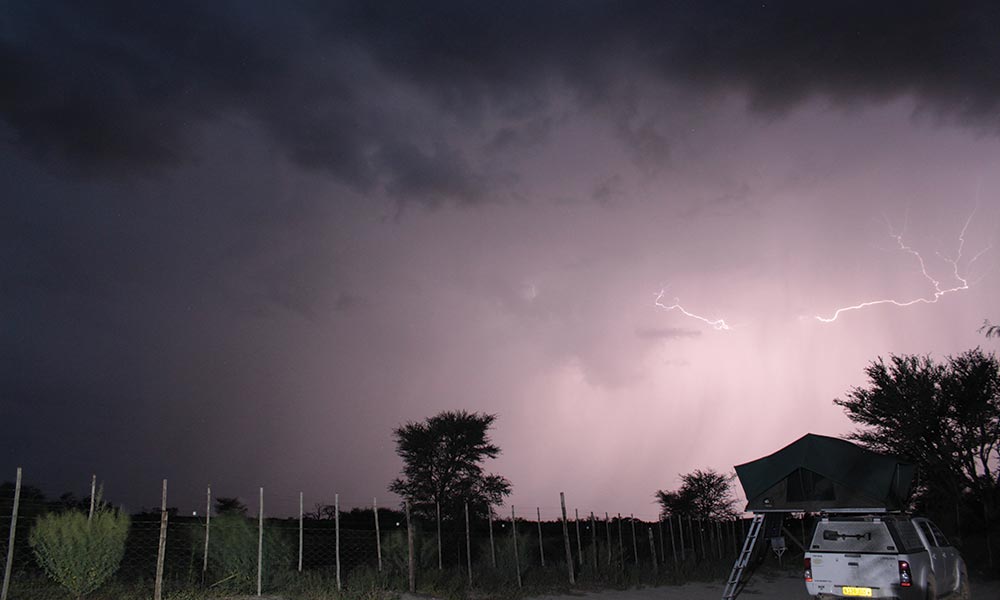
Travel information
Upington butchery
24 Scott Street, Upington
Tel: 054 332 1781
Cell: 082 577 8941
Email: [email protected], www.upingtonslaghuis.co.za
Kalahari Monate Lodge
Truia and Theuns Botha
Cell: 082 445 8324 or 081 281 3113
Email: [email protected]
Address: R360, Upington, 8801, South Africa
Kgalagadi
Transfrontier Park
Tel: 012 428 9111 for reservations
www.sanparks.org/parks/kgalagadi/
Kgalagadi Lodge
Denise and SJ Koortzen
Tel 082 303 8768 or 083 225 0331
Email: [email protected], www.kgalagadi-lodge.co.za
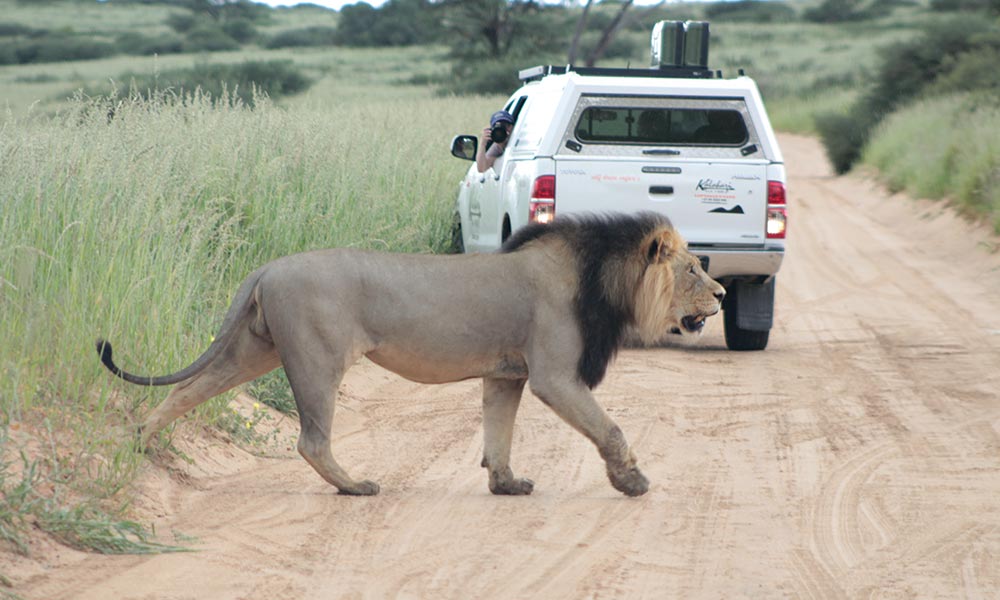
My top three tips
Plan and prepare well, it is not as civilised as Kruger. Take your time, to see the park and to meet other travellers (we met so many cool people). Spend at least two nights in each location as the travel time between camps is substantial.
